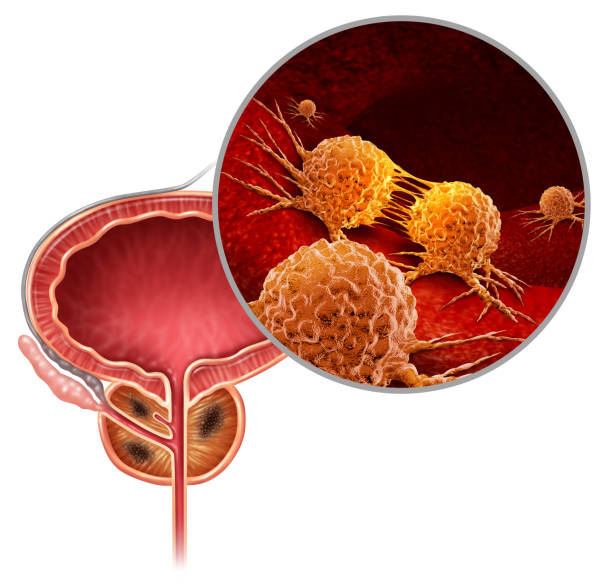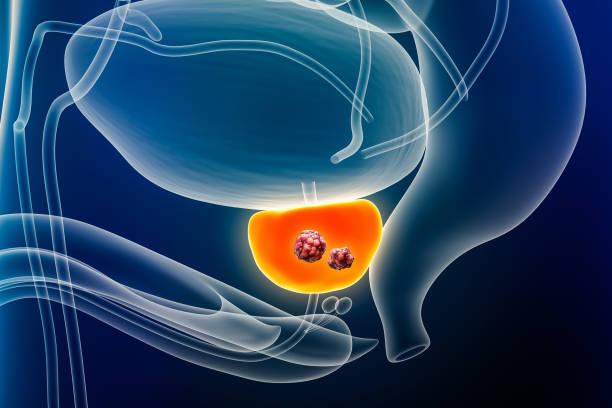A study warns about the real risk of some prostate cancers considered 'low-grade'.

New research led by U.S. medical institutions warns that not all prostate cancers classified as "low-grade" actually pose a low risk to patients.
The study, published July 31, 2025, in the journal JAMA Oncology, concludes that one in six men diagnosed with grade 1 (GG1) prostate cancer may be at intermediate or high risk , despite initial biopsy results.

It's one of the most common types of cancer in men and can vary in aggressiveness. Photo: iStock
The research was conducted by a team of specialists from Weill Cornell Medicine, University Hospitals of Cleveland , and Case Western University. Analyzing data from more than 300,000 men diagnosed with prostate cancer between 2010 and 2020, they found that approximately 117,000 of them had GG1 tumors. This grade is generally considered synonymous with a low risk of progression , so most patients receive active surveillance rather than invasive treatments.
However, by integrating additional information such as PSA (prostate-specific antigen) levels, tumor size, and other clinical data , the researchers found that more than 18,000 of these patients actually had features associated with intermediate- or high-risk cancers , for which surgery or radiation therapy is recommended.
Underestimation of risk and possible consequences Dr. Bashir Al Hussein, co-senior author of the study, noted that “up to 30% of men diagnosed with GG1, but who actually fall into a higher-risk category , were treated with active surveillance, implying potentially undertreatment.”
The study suggests that relying solely on biopsy information to classify risk can lead to inappropriate clinical decisions. Biopsies only sample a portion of the prostate and may miss areas with more aggressive cells.

It's one of the most common types of cancer in men and can vary in aggressiveness. Photo: iStock
The research also fits into a broader medical debate about whether GG1 cancer should still be called "cancer," given that many of these tumors do not progress or pose a life-threatening risk. However, study co-author Dr. Jonathan Shoag cautions that "there is a conceptual flaw in equating low grade with low risk," and says removing the cancer label from GG1 can lead to the exclusion of necessary treatments in some cases.
Clinical implications and need for greater precision The study underscores the need for better risk stratification for each patient , considering not only biopsy but also other clinical markers. The goal is to avoid both overtreatment and undertreatment, and to ensure clear information so patients understand their situation.
Dr. Neal Arvind Patel, first author of the article, noted that a portion of men with GG1 tumors may have more aggressive tumor biology , which should be taken into account to optimize clinical outcomes.
The research team concludes that physicians should individually evaluate each patient's outcomes and improve communication about the true risk associated with these types of diagnoses .
*This content was rewritten with the assistance of artificial intelligence, based on information from JAMA Oncology.
More news in EL TIEMPOeltiempo

%3Aformat(jpg)%3Aquality(99)%3Awatermark(f.elconfidencial.com%2Ffile%2Fa73%2Ff85%2Fd17%2Fa73f85d17f0b2300eddff0d114d4ab10.png%2C0%2C275%2C1)%2Ff.elconfidencial.com%2Foriginal%2Fcdb%2Fbca%2F632%2Fcdbbca632969bfdbebc8bf0430211acc.jpg&w=1280&q=100)

%3Aformat(jpg)%3Aquality(99)%3Awatermark(f.elconfidencial.com%2Ffile%2Fa73%2Ff85%2Fd17%2Fa73f85d17f0b2300eddff0d114d4ab10.png%2C0%2C275%2C1)%2Ff.elconfidencial.com%2Foriginal%2Fe0b%2F768%2F170%2Fe0b7681700ef4dfd55d7150aeeff6d96.jpg&w=1280&q=100)
%3Aformat(jpg)%3Aquality(99)%3Awatermark(f.elconfidencial.com%2Ffile%2Fa73%2Ff85%2Fd17%2Fa73f85d17f0b2300eddff0d114d4ab10.png%2C0%2C275%2C1)%2Ff.elconfidencial.com%2Foriginal%2Fcbb%2Fac3%2Faea%2Fcbbac3aea5212011263001cc833902e9.jpg&w=1280&q=100)